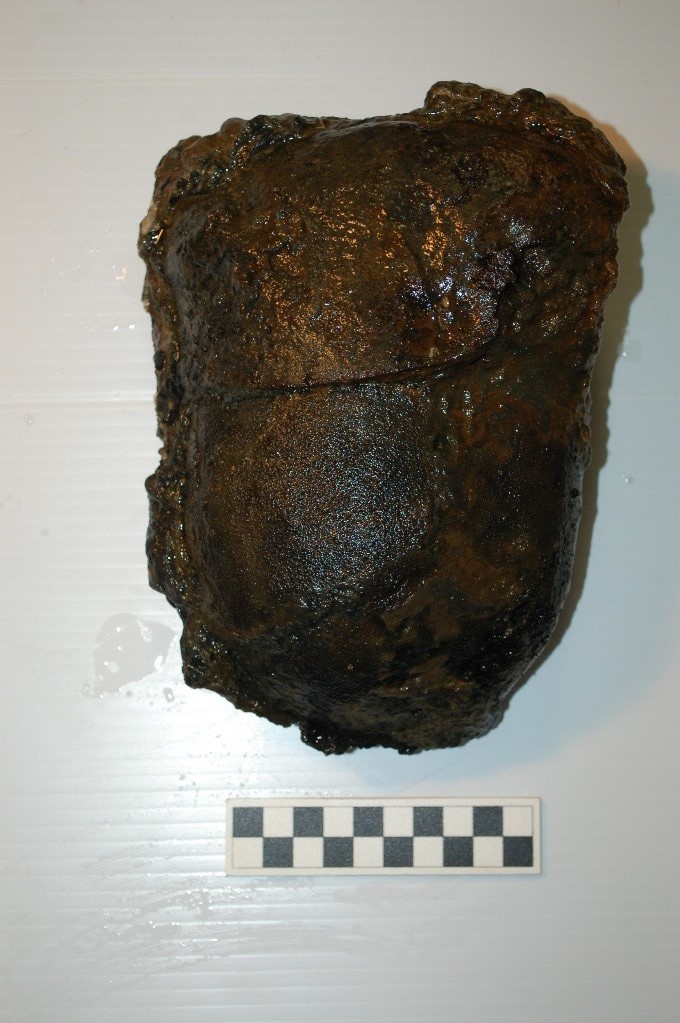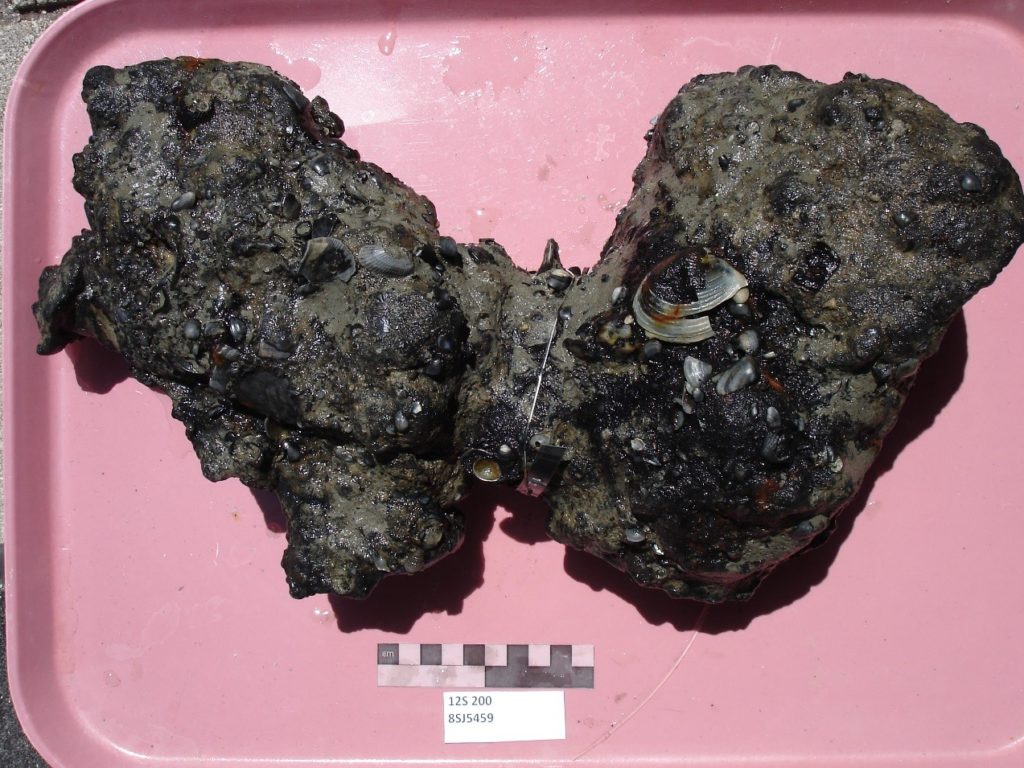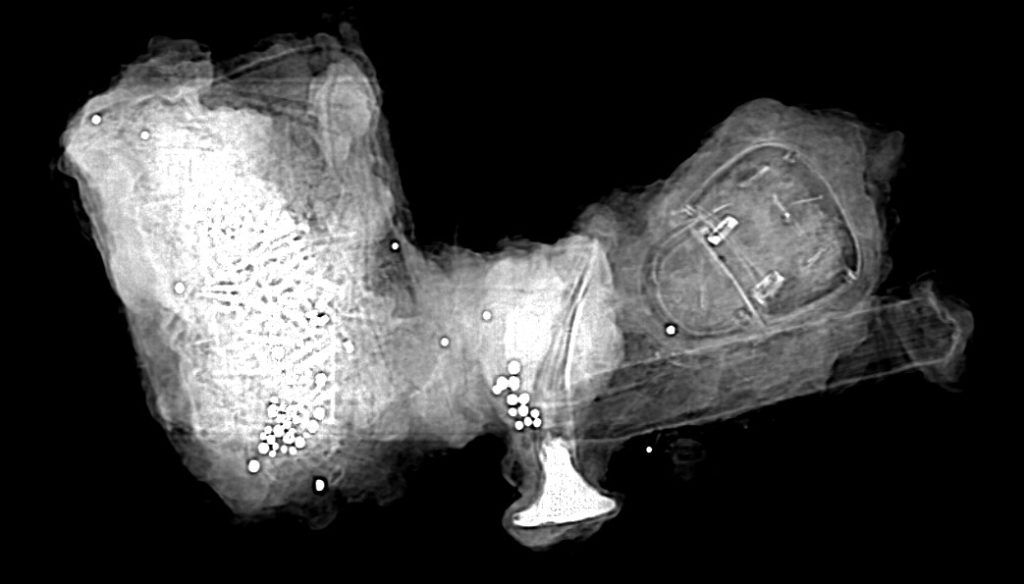Recently, one of our dedicated volunteers, Ed Coward, discovered something pretty fascinating. Ed comes in every Thursday to help out with artifact conservation, and he typically spends the day airscribing. This is one of our dirtiest jobs, but somehow Ed manages to stay pretty clean throughout the process as you can see in the photo.
Airscribing is the process of removing concretion (build up of sand, shells, and sediment) from artifacts that have been recovered by the Lighthouse Archaeological Maritime Program (LAMP).
Ed is currently working on an artifact (12S 200) from the Storm Wreck that was recovered in 2012. To get a better idea of what is inside of a concretion, we always take X-rays. These can help the conservators know where to start working, or help them find small, fragile artifacts within the concretion.
When we first looked at the X-ray image for 12S 200, we knew right away that three things were present: A hammer, nails, and a padlock.
Because the hammer and padlock were very fragile, our Assistant Archaeological Conservator, Andrew Thomson, removed those items before Ed began work on the concretion. So what we’re focused on are the nails.
You’re probably thinking “What in the world could be fascinating about nails?” right?
Well, we were too!
As Ed slowly chipped away at the concretion surrounding the nails, he noticed something different from the X-ray. There was something between the nails and the concretion. X-ray images do not show organic materials, so this does happen on occasion.
But what could it be?
As he continued to uncover this unknown layer, we were able to get a better sense of what type of material this was: leather.
Unlike many of the nails we have found on this shipwreck site (in barrels or alone), these nails were contained in what appears to be a leather pouch. Other than a few leather pieces and fragments, this is the only leather we have found on Storm Wreck.
The seams of the pouch are clearly noticeable and the general condition of the pouch itself is incredible, considering it’s from the 1700s.

A leather pouch containing nails. This is the only leather found on Storm Wreck other than a few small fragments.
Archaeologists use every detail when researching a shipwreck. It is important to know how and where items were laying on the seafloor, because this can help piece together the story. The fact that a pouch of nails ended up in the same concretion as a hammer is something to speculate on.
Although, we cannot make any definitive conclusions, it is possible that this pouch of nails belonged to the owner of the hammer. The hammer in concretion 12S 200 is a cobbler’s hammer. From looking at the X-ray, the nails appear to be of normal size, but it is definitely possible that the smaller nails used by cobblers could be mixed in.
Ed’s discovery of this leather pouch reminds us that you never know what you might find inside of a concretion.
Without the ability to see organic materials in X-rays, the conservators have to be extremely cautious when airscribing. Something they are not expecting to come across, could end up being an important find!
Maggie Burkett is the Archaeological Conservation Technician at the St. Augustine Lighthouse & Maritime Museum. In 2011 she completed the Lighthouse Archaeological Maritime Program Field School, and, in 2012, returned as a supervisor for the program. Maggie started her position as the Conservation Technician in the Fall of 2014. She has a Bachelor’s of Science degree from Juniata College in Environmental and Marine Sciences, with a minor in Spanish.




